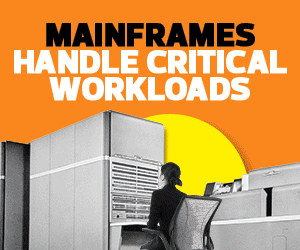A Nuanced Approach to Modernization
As organizations consider the future of their mainframe systems, they must think strategically. Their computing platforms must support their business needs. Further, as IT and business leaders plan for the future, they must be able to map a course from their current IT systems to their future goals.
Brent Ellis, senior analyst at Forrester, says the pendulum has swung away from the idea that organizations should move their mainframe resources completely to the public cloud. Instead, he says, IT leaders must carefully decide which applications to rewrite, which to re-platform and which to leave as they are. “People are realizing that they have to have a more nuanced approach to mainframe modernization,” he says.
Security remains a critical challenge for organizations looking to modernize their IT operations. Cybercriminals are more organized and sophisticated than ever, and dealing with their attacks represents a priority for organizations across industries.
DISCOVER: Read on to find out the best ways to approach mainframe modernization.
Ransomware has emerged as a top threat over the past decade, but IT leaders also need to address numerous other security risks, including phishing and insider threats. New security tools and strategies can help organizations meet the challenge.
“Every day, there’s a new security challenge,” Rutten says. “The first thing that you need to do if you’re on a mainframe and you’re concerned about security is to make sure that you’re up to date with your mainframe generation.”
For example, Rutten notes, IBM introduced pervasive encryption, which encrypts all data both at rest and in transit, on its z14 mainframe generation. The z16 line, which debuted last year, introduced the industry’s first quantum-safe solution, which can protect data from compromise even after quantum computing becomes available to crack “traditional” cryptography — a development that Rutten expects to see in the next five years.
“If you’re still running two or three generations behind, then you might be exposed more than you want to be,” he says.














